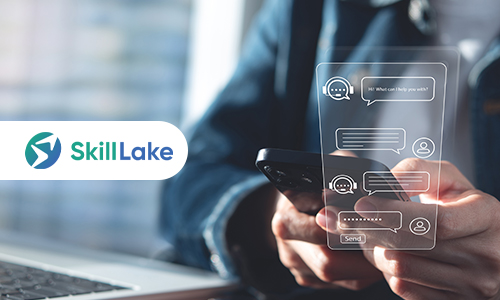Is the Process of Onboarding Employees Setting Up Success?

The process of onboarding employees is one of the essential steps for acclimating new hires to your firm and prepping them to face the demands of their new role. According to a Gallup poll, only 15% of employees get engaged at work—a figure compounded by the pandemic—which concerns companies that know that one key factor to enhancing employee engagement is ensuring new hires get a solid start.
The most effective onboarding programs are well-planned and efficient, and they have a long-term influence on employee retention. Structured onboarding practices and staff retention have a significant correlation. When new hires go through a structured onboarding process, their retention increases by 82%, and their productivity increases by more than 70%.
Enhancing the Process of Onboarding Employees
When you keep aside some time and resources to develop a purposeful, high-quality employee onboarding program, you receive far more than you give. The return is apparent: satisfied, engaged, and productive employees who understand and justify their new responsibilities. In addition, by concentrating on a few key enhancements to your current onboarding process, you can assist new team members in making a smooth transition and assimilation into your business culture.
From an organizational standpoint, effective onboarding implies that the staff can begin working at their full potential sooner. As a result, organizations are rethinking their strategy for hiring and onboarding staff in the aftermath of COVID-19. In contrast, businesses forced to lay off workers and stop recruiting during the pandemic have subsequently begun to re-hire existing workers and recruit new ones.
Here are some basic practices to consider when navigating onboarding challenges:
1. Approach proactively
Taking a proactive approach to preparation and communication is one of the best ways to optimize your employee onboarding program. Do not wait till the employee’s first day to interact with them. Instead, start the process ahead of time by communicating via email. This way, recruits will have a better idea of what to expect on their first day at work.
2. Well-structured plan can eliminate stress
It is natural for recruits to be nervous while starting a new job. Organizations that do not have a plan for their arrival add to the burden of an already stressful situation. In addition, it demonstrates to the new employee that the organization does not regard them enough to prepare for them, causing them to reconsider their decision.
3. Be Social
If you have a bunch of new hires that start on the same day, plan social activities to assist them in bonding with their new teammates. One of the obstacles for new hires throughout the onboarding process is getting to know their co-workers. You can ease the ice-breaking session with interesting events, like planning a lunch for your new hires with their team on the first day to meet their reporting manager and the rest of the team.
4. Set common rules
Employee onboarding training should be consistent across the organization and for all new employees, regardless of the designation or role. Adjustments are required based on the individual scenarios in each team— for example, a marketing professional’s onboarding may differ from that of a receptionist — but overall criteria should be the same.
5. Determine your onboarding training requirements
It is also beneficial to consider each new hire’s capabilities and weaknesses so that they are trained to be efficient. This is because if they are familiar with each new hire’s skill gaps, recruiting managers can provide the necessary training to fill in the skill gaps.
6. Design and execute an onboarding training plan
With HR onboarding software, you no longer have to schedule training manually. One can train new staff quickly and easily without overwhelming them. You can also gamify the process to promote success. Employees should understand the department and individual key performance indicators (KPIs), such as quality and performance, during onboarding. Career advancement and learning about other internal processes ensure that new hires comprehensively understand the organization and its role.
7. Clarify expectations and responsibilities
Even the most talented new joiners will eventually become a liability to the organization if they do not follow the company policies and embrace the culture. Onboarding training programs ensure that everyone revisits various aspects of your organization’s mission and culture to ensure they are fully absorbed, understood, and accepted.
8. Make onboarding more engaging
Technology enables a more involved onboarding process for new hires and helps streamline the new hire paperwork. In addition, training materials that spur interest, such as quizzes, videos, and webinars, are often easier for employees to understand and absorb.
9. Create workflows
Onboarding new staff is a multi-step procedure, similar to completing a university degree program. Building a scalable HR process eliminates the repeated processes of handling the new-hire classes in multiple departments simultaneously. Workflows turn the process of developing top-tier personnel into an assembly line. With a unified platform, the C-suite can quickly obtain a high-level picture of how many applications, interviews, and follow-ups are lined up in the recruitment and hiring process. Employee training can then occur across the board, not only for new hires but as ongoing learning, which is crucial for all employees.
10. Allow co-workers to mentor a new employee
While HR and management are essential in the onboarding program, something must be said about allowing someone from the frontline to show a new worker the rules. It gives the new team members a powerful perspective that represents what they will encounter daily in the future. In addition, new joiners can be guided by a co-worker as a buddy who can help them and answer all their questions related to the workplace, team, role, etc.
11. Automate the procedure
Automating paperwork and standard onboarding training programs boost productivity for all parties involved. Human resources can spend less time following up and chasing employees by creating more engaging and efficient processes to support them. New employees can begin assimilating into the culture and attain goals more rapidly. When documents are due, unfinished, or incomplete, automated notifications help notify employees.
12. Go digital with HR Onboarding Software
Deploying employee onboarding software creates a paperless environment that centralizes the employee onboarding and training plan for new employees. This enables one-click reporting and at-a-glance analysis of individual employees or entire training programs as they progress through the process. Going green in human resources entails converting from paper to digital through recruiting, hiring, and training. In addition, a good platform may integrate with existing systems and data formats to ensure a smooth transition from recruit to employee to retiree.
13. Inform onboarding program with feedback
Throughout onboarding, don’t be afraid to solicit feedback from your new employees on areas where the process could improve. Of course, given a new hire’s position within the firm, they may hesitate to criticize their new employer or your onboarding methods. As a result, keep such queries informal and relaxed, possibly anonymous surveys to remove any unnecessary pressure a new worker may feel while offering genuine and unbiased input.
The Future is Now: Streamlining Onboarding with a Modern LMS
As the job market heats up and turnover rates skyrocket, executives, hiring managers, and HR professionals must recognize the benefits of a Learning Management System (LMS) can provide the modern onboarding process for employees. In today’s talent economy, forward-thinking businesses must evaluate how LMS can help integrate recruits into their company culture and make them productive as soon as possible.
An LMS ensures you’re covering all relevant information efficiently and effectively by constantly attempting to enhance and update your onboarding efforts. And by adhering to an onboarding training plan, you can ensure that each new hire is ready to succeed.
How Skill Lake helps you with effective onboarding
Based on a study by the Society for Human Resource Management (SHRM), a quarter of recruits leave their employment within the first six months owing to confusing expectations, inadequate onboarding, and training.
Skill Lake lets you involve your recruits throughout the onboarding to ensure that they are productive, irrespective of whether they work remotely or in the office. Our system informs the recruits of your corporate culture, HR regulations, and data security protocols to generate a sense of belonging from the outset. To help them perform at their best on the job, Skill Lake helps impart functional skills based on the learning paths established by mentors.
Interested in knowing how Skill Lake can help you in the process of onboarding employees?
Build a culture of continuous learning with Skill Lake’s state-of-the-art people development platform. Give your employees professional training to help them excel in their job roles and propel your business to greater efficiency and success.
Start Today

Sachin Krishna
Sachin is a passionate advocate of e-learning with a profound knowledge of the field. He regularly writes compelling content that captivates readers and works to spread awareness of learning solutions.